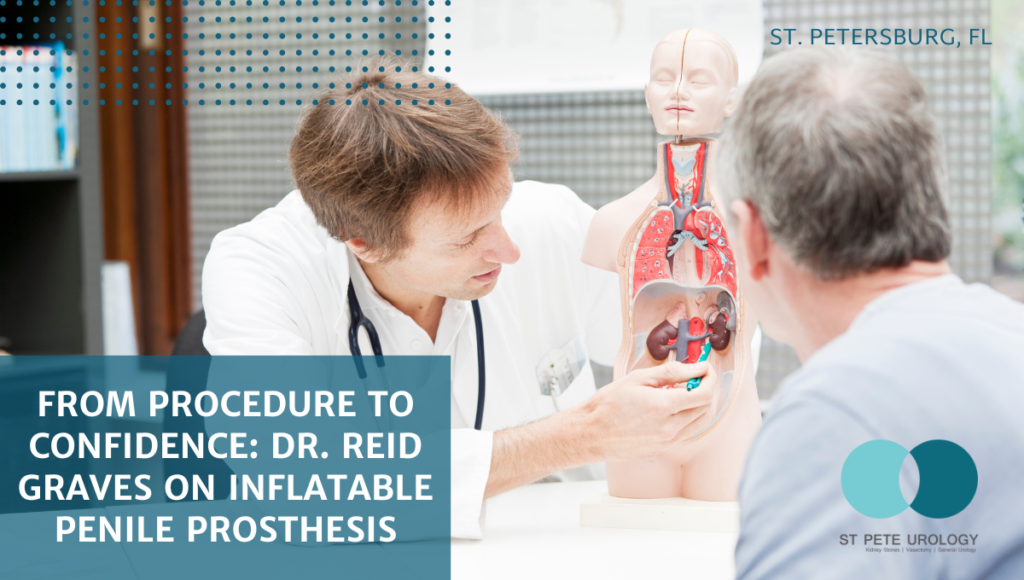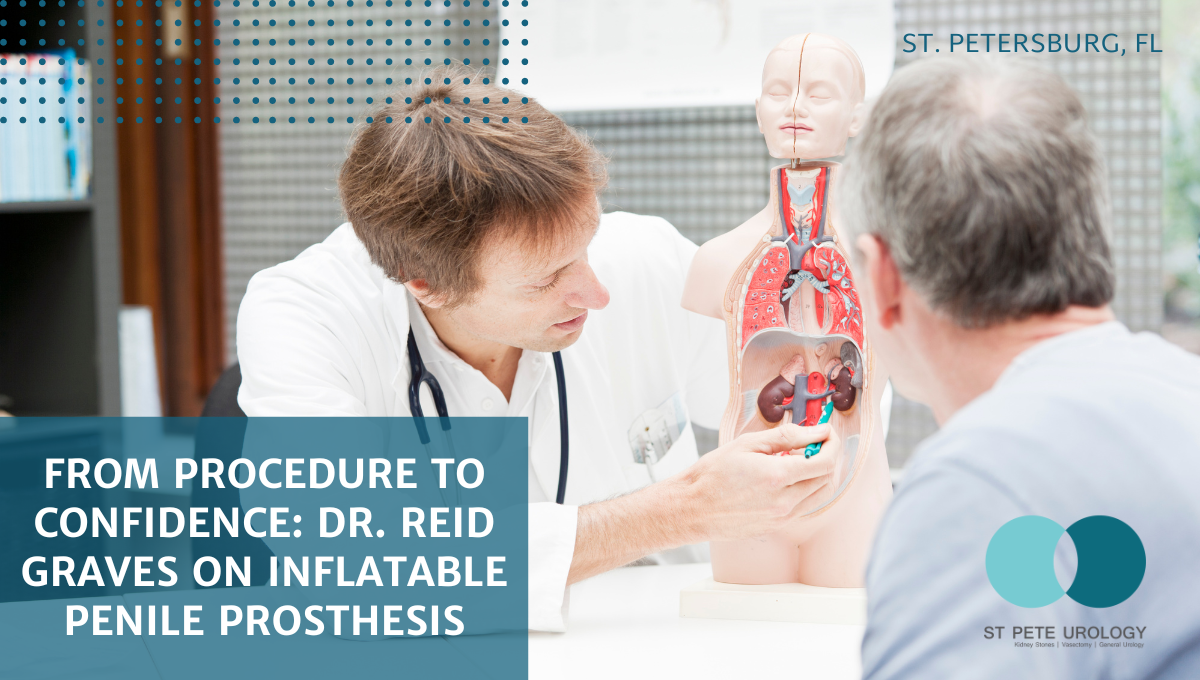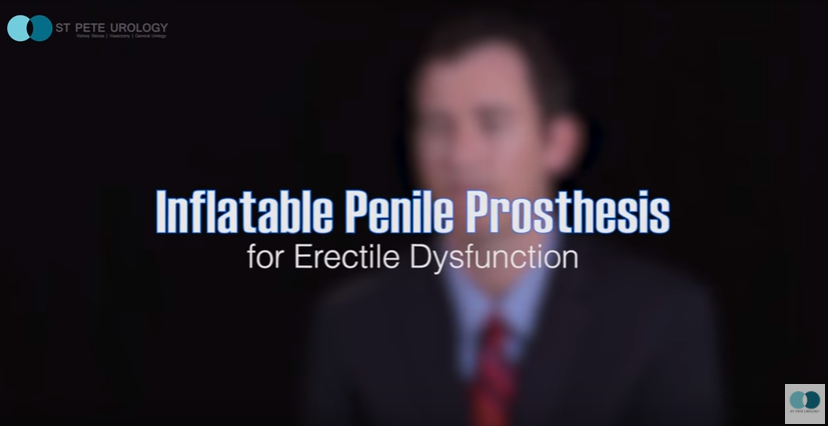Key Takeaways:
- Penile prosthesis boasts an extraordinarily high success rate and patient satisfaction rates.
- St. Pete Urology offers a supportive environment to help patients navigate the journey “from procedure to confidence”.
- Penile prosthesis can help restore confidence and improve quality of life.
Investing in personal health can often seem daunting, especially when it entails navigating complicated medical jargon and procedures. However, understanding the process can dramatically ease any apprehension, build confidence, and ultimately transform lives. We sit down with board-certified urologist Dr. Reid Graves, who practices at St. Pete Urology in St. Petersburg, FL, to dissect the details and benefits of inflatable penile prosthesis.
De-Mystifying Penile Prosthesis


“Hi, I’m Dr. Reid Graves,” he begins. His demeanor exudes confidence, and his words are imbued with optimism, quickly putting us at ease. He continues, “After the penile prosthesis is placed, men will come back to the office for their normal post-operative check within a couple of weeks.”
Forgoing the dense medical language, he breaks down the process into simple terms. He explains that men return for a routine check-up, which is followed by an educational session six weeks post-operation. The focus of this session? “We’ll start teaching them how to use the device and pump the device up and down so that they’re able to use it,” he explains.
Being taught how to use the device might seem scary, but the process is gentle, patient, and encouraging. And the commitment to mastering this device? It pays off exponentially.
The Success Rates of Prosthesis
The penile prosthesis, Dr. Graves tells us, boasts an extraordinarily high success rate, and it has done so for decades. He shares, “The penile prosthesis has been around for decades and in fact has an extraordinarily high success rate.”
Notably, it doesn’t just have a high success rate — it also has outstanding patient satisfaction rates. Dr. Graves addresses the hesitations that some men may have about this invasive procedure. But his tone is reassuring. He asserts, “While some people are wary and nervous about having such an invasive procedure done, for many men it’s the last option that they have and in fact it has very high success rates and satisfaction rates.”
And it’s not just about the procedure’s effectiveness — it’s about how it transforms lives, bestowing newfound confidence and restoring a sense of normalcy for men.
Confidence Restored and Life Transformed
The combination of Dr. Graves’s expertise, his team’s care, and the effectiveness of the penile prosthesis leads to a transformative journey for patients. After weeks of following the procedure and learning to use the device, patients can regain their confidence and resume their active lifestyle. Their personal health investment pays off, and the result is an improved quality of life.
Discover the Benefits of Penile Prosthesis at St. Pete Urology
If you’re considering inflatable penile prosthesis and looking for a trusted urologist in St. Petersburg, Florida, turn to St. Pete Urology. With their patient-centered approach and a team of experienced professionals led by Dr. Reid Graves, they offer a supportive environment that prioritizes your health and well-being. They are committed to helping you navigate the journey “from procedure to confidence” with compassion, understanding, and expert medical guidance. Choose St. Pete Urology for your penile prosthesis needs, and experience the transformative power of this procedure.
References:
- St. Pete Urology | Urologists in St Petersburg, Florida. (2020, September 14). St Pete Urology. https://stpeteurology.com/penile-implant-surgery-for-erectile-dysfunction/
- St Pete Urology. (2019, March 5). Treating Erectile Dysfunction with Inflatable Penile Prosthesis. St Pete Urology. https://stpeteurology.com/erectile-dysfunction-inflatable-prosthesis/
- Cavayero, C. T., & McIntosh, G. V. (2022, September 26). Penile Prosthesis Implantation. Nih.gov; StatPearls Publishing. https://www.ncbi.nlm.nih.gov/books/NBK563292/
- Pietrangelo, A. (2017, July 6). What to Expect from a Penile Implant. Healthline; Healthline Media. https://www.healthline.com/health/erectile-dysfunction/penile-implant-surgery
- Galan, N. (2018, February 14). Penile implants: How they work and what to expect. Medicalnewstoday.com; Medical News Today. https://www.medicalnewstoday.com/articles/penile-implant









